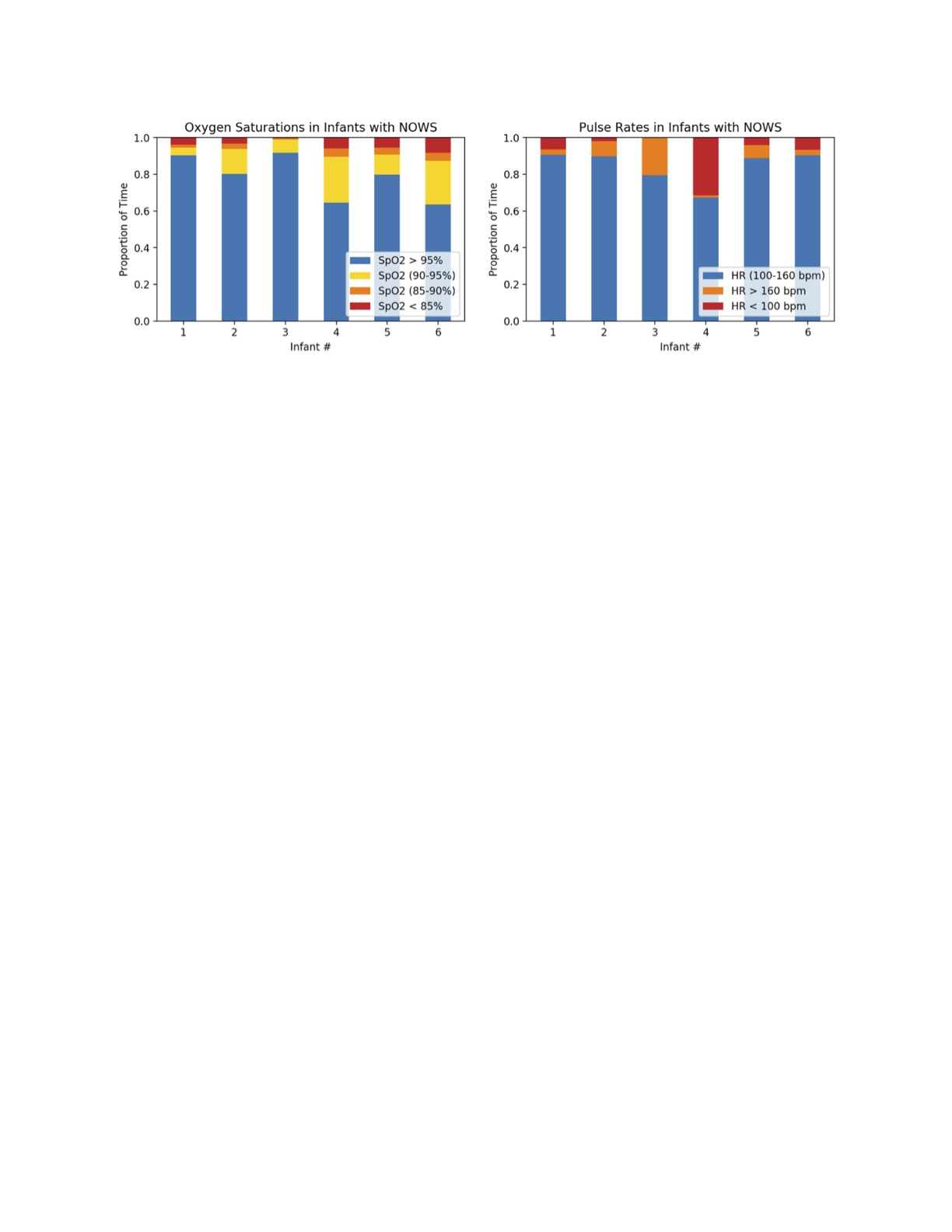Back
Neonatal General
Category: Abstract Submission
Neonatology General 6: NOWS - Maternal-Fetal Exposures
417 - Back to Basics: Variation in Pulse-Oximetry in Infants with NOWS.
Friday, April 22, 2022
6:15 PM – 8:45 PM US MT
Poster Number: 417
Publication Number: 417.136
Publication Number: 417.136
Suhagi Kadakia, University of Maryland Children's Hospital, Elmhurst, IL, United States; Daniel Smolyak, University of Maryland, College Park, College Park, MD, United States; Margret V. Bjarnadottir, University of Maryland College Park, College Park, MD, United States; Dina El-Metwally, University of Maryland School of Medicine, Baltimore, MD, United States
- SK
Suhagi Kadakia, MD
Assistant Professor
University of Maryland Children's Hospital
Elmhurst, Illinois, United States
Presenting Author(s)
Background: Neonatal opioid withdrawal syndrome (NOWS) continues to surge during COVID-19 pandemic secondary to maternal isolation and limited access to rehabilitation services. Emerging nonpharmacologic care bundles confines NOWS assessment to reduced domains of infants functioning as sleep and feeds with minimal to no monitoring of vital signs.
Objective: Our aim for this study was to explore physiologic vital signs in infants with NOWS through bedside monitors.
Design/Methods: A pilot of six infants with NOWS, ≥ 37 weeks of gestation were prospectively studied. Oxygen saturations and heart rate were collected through the Nellcor™ N-600x monitor in intervals of 10 second epochs. The recorded data was collected for a 48-hour study period. During the study, routine NICU care was applied, and no changes were made to the infant’s schedule.
Results: Of the 48-hour study periods, an average of 35.8 hours (SD = 10.6) of pulse-oximetry data was available. The average gestation age was 38.9 weeks (SD = 0.9). A total of 74,773 recording epochs were obtained. 33% of infants experienced more than 25% of the study duration below 95 SpO2. 50% of study infants spent at least 5% of the study duration at SpO2 levels < 85%. All study infants spent at least 5% of the study duration outside target range for heart rate (Figure).Conclusion(s): Infants with NOWS may experience repeated bouts of low heart rates and desaturations below target range, with potential implications on cerebral oxygenation and long-term neurodevelopment. Further studies on vital signs monitoring of NOWS; especially during non-pharmacological care bundles are warranted.
Saturation and Heart Rate in Infants with NOWS
Objective: Our aim for this study was to explore physiologic vital signs in infants with NOWS through bedside monitors.
Design/Methods: A pilot of six infants with NOWS, ≥ 37 weeks of gestation were prospectively studied. Oxygen saturations and heart rate were collected through the Nellcor™ N-600x monitor in intervals of 10 second epochs. The recorded data was collected for a 48-hour study period. During the study, routine NICU care was applied, and no changes were made to the infant’s schedule.
Results: Of the 48-hour study periods, an average of 35.8 hours (SD = 10.6) of pulse-oximetry data was available. The average gestation age was 38.9 weeks (SD = 0.9). A total of 74,773 recording epochs were obtained. 33% of infants experienced more than 25% of the study duration below 95 SpO2. 50% of study infants spent at least 5% of the study duration at SpO2 levels < 85%. All study infants spent at least 5% of the study duration outside target range for heart rate (Figure).Conclusion(s): Infants with NOWS may experience repeated bouts of low heart rates and desaturations below target range, with potential implications on cerebral oxygenation and long-term neurodevelopment. Further studies on vital signs monitoring of NOWS; especially during non-pharmacological care bundles are warranted.
Saturation and Heart Rate in Infants with NOWS

